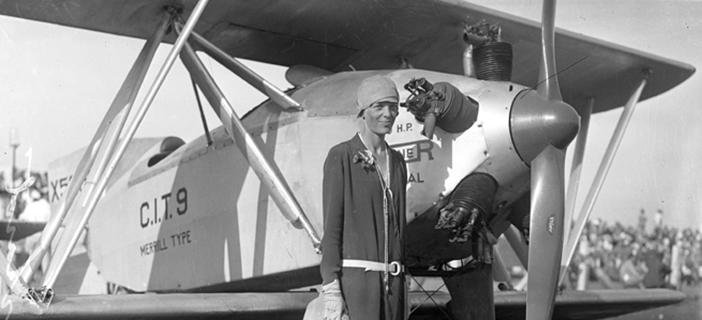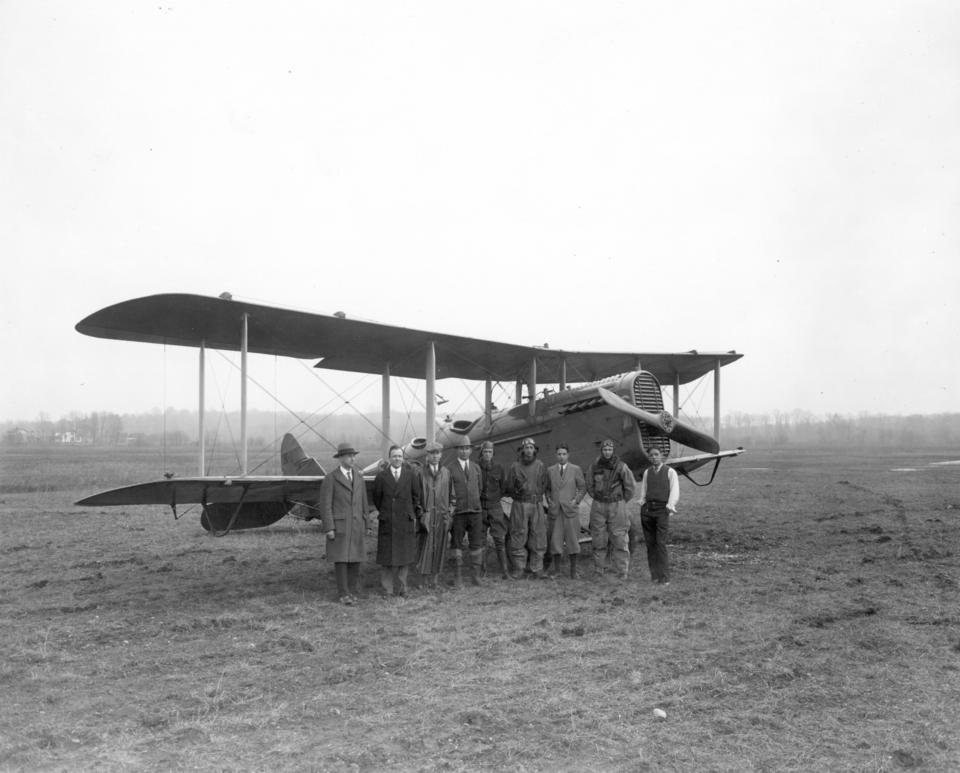Taking Measure
Just a Standard Blog

Amelia Earhart in 1928.
Amelia Earhart continues to make headlines, mainly because of her mysterious disappearance. The famed aviatrix vanished on July 2, 1937, during her attempt to pilot a plane around the world. Searches for the wreckage, and speculation about what happened, continue even today.
NIST has its own Earhart mystery, dating back to a happier time in her career. The story has never been fully told, at least not for many decades. I got interested because my job involves reading headlines, and in spare moments I enjoy hunting for missing tidbits of NIST history.
Back in 1928, Earhart became the first woman to fly across the Atlantic Ocean, a successful flight that launched her fame. She was a passenger on the seaplane Friendship, which left Newfoundland, Canada, on June 17, 1928, and landed the next day in Wales in the United Kingdom.
The trans-Atlantic flight was considered daring and dangerous given the hazards of early aviation. The plane was outfitted with radio equipment, which, according to many media accounts, helped the crew take bearings from ships before it eventually stopped working.
Radio is the link between Earhart and NIST, which has been doing communications research for a century. I write about this area of NIST research, and it seemed logical to wonder if these two institutions ever crossed paths.
Indeed, legend has it that Earhart got help with the Friendship’s radio from NIST (then called the Bureau of Standards), a leader in the development of early radio, including systems for aircraft. Searches of the Internet and various archives reveal mentions of this assistance in some profiles and obituaries of the engineer involved—Lloyd Berkner, who later became world famous himself.
Berkner worked for NIST from May 1928 to June 1933. Just 23 at the time, he apparently helped Earhart prepare for radio communications on the Friendship. According to some accounts he engineered, installed and/or flight-tested her radio. Berkner was already a radio pioneer. He had operated radio stations as a teenager and while in college, served as a shipboard radio operator, and designed a radio communications system for naval aircraft.
At that point the historical record gets murky. Earhart’s 1928 flight was planned in secrecy, and no records of this NIST project have surfaced. None of the NIST history books say anything about it, although one, Achievements in Radio, mentions Berkner a number of times including his entry into the NIST Radio Section on May 9, 1928 (about the time Earhart was selected for the flight).
No mention of the Earhart project has been found in any NIST annual reports, technical journals or the archived papers of John Howard Dellinger, who was in charge of NIST radio research for about 30 years. My search revealed that Dellinger kept many records, including a handwritten diary on large index cards. The diary for May-July 1928 mentions Berkner … but not Earhart.

The coolest discovery was the only known photo of Berkner from that time. I found it by chance at the National Archives and Records Administration without any personnel identifications. First I found an old glass negative in NIST records at the National Archives in Colorado, and then later on, in NIST records at the Archives in Maryland, I found a print copy. NIST librarian Keith Martin helped me identify the people in the photo.
But Berkner doesn’t seem to appear in any Earhart biographies or her own books or archived papers. The Friendship itself apparently disappeared long ago.
Making this a real whodunit, some media accounts credit other radio experts for the Friendship’s communications equipment. Frank Gunther of New York is mentioned in several publications, while Wallace Battison of Massachusetts is credited in others. On July 1, 1928, the Brooklyn Daily Eagle published Battison’s diagram of the radio’s parts and locations in the Friendship and a photograph of him listening for signals during Earhart’s flight.
Curiously, The New York Times published a brief article on June 6, 1928, stating that Battison removed existing radio equipment from the plane and replaced it with his own.
So it’s not clear exactly what Berkner and NIST did for Earhart. Maybe it was just consultation. Or was the Berkner/NIST radio system removed from Earhart’s plane at the last minute?
We may never know. Berkner went on to countless other achievements and honors. He served as radio engineer for Rear Admiral Richard Byrd’s 1928-1930 expedition to the Antarctic, constructing radio towers used to communicate with aircraft and ground stations all over the world. (Byrd supplied the Friendship for Earhart’s flight.)
Berkner later conducted research on the ionosphere (the layer of the atmosphere that reflects radio waves) and took charge of naval aviation electronics engineering during World War II. Among other positions, he was president of the Institute of Radio Engineers, which is now IEEE, and the American Geophysical Union and a member of the National Academy of Sciences. He died in 1967.
About the author
Related Posts
Comments
Hi, Kevin. Thanks for your comment. I checked with one of our library staff members, who confirmed you are correct. I've updated the caption accordingly.






Fascinating article. I look forward to digging further. Small correction regarding the airplane pictured. It is a De Havilland DH-4, not a Curtiss JN-4 Jenny. The two planes, while appearing similar, had different aileron control cable set-ups, differing underwing bows (Jenny curved, DH-4 angular), differing radiators due to different engines (OX-5 or Hispano Suiza for the Jenny; Liberty for the DH-4).